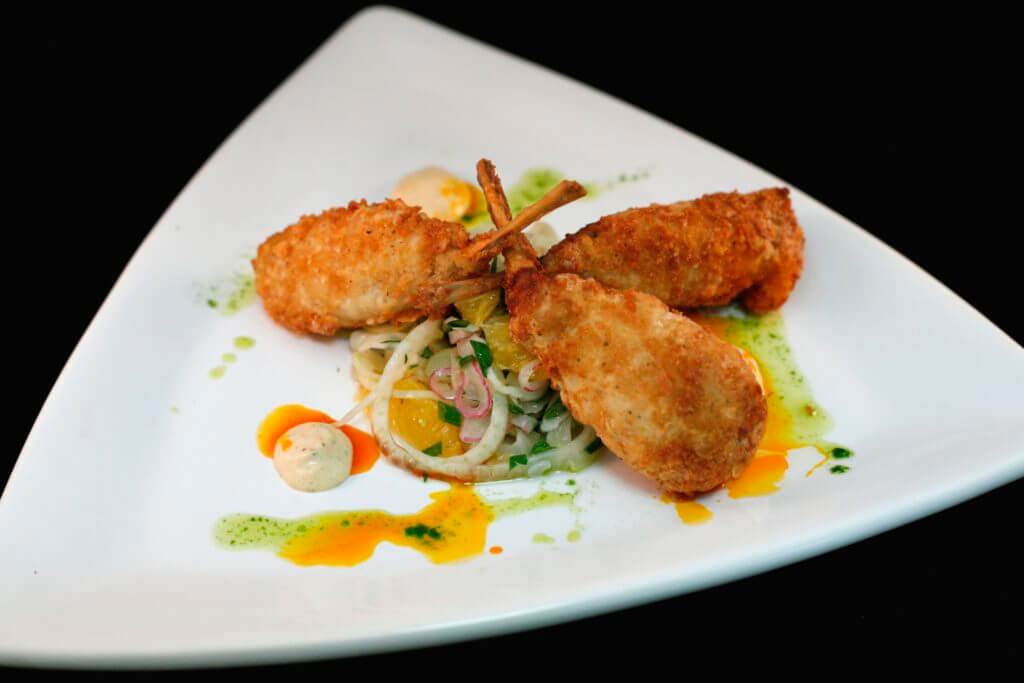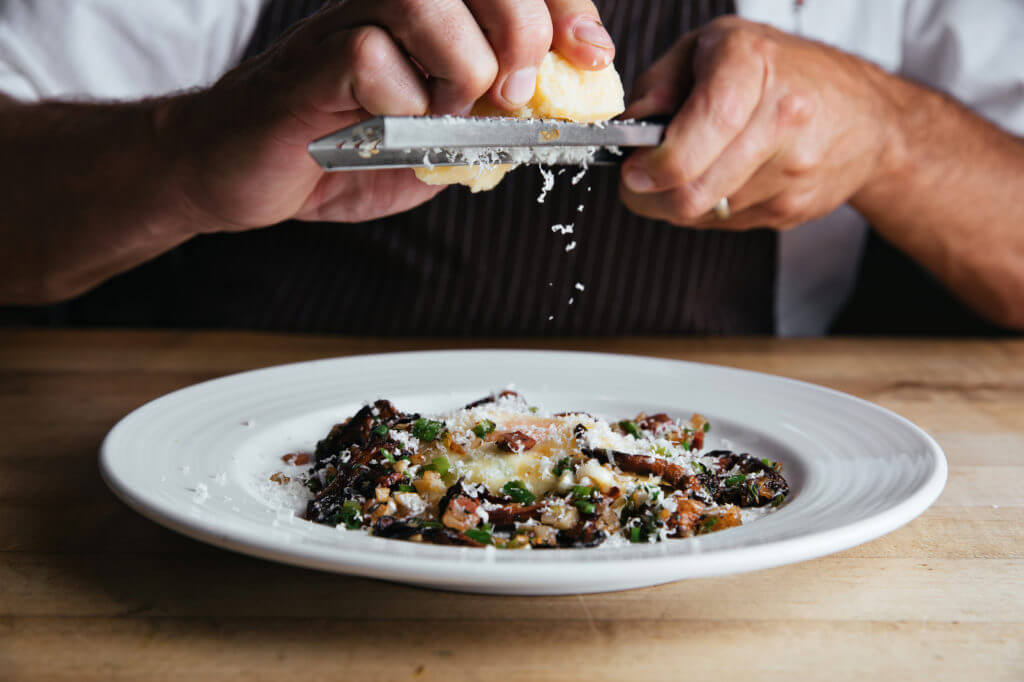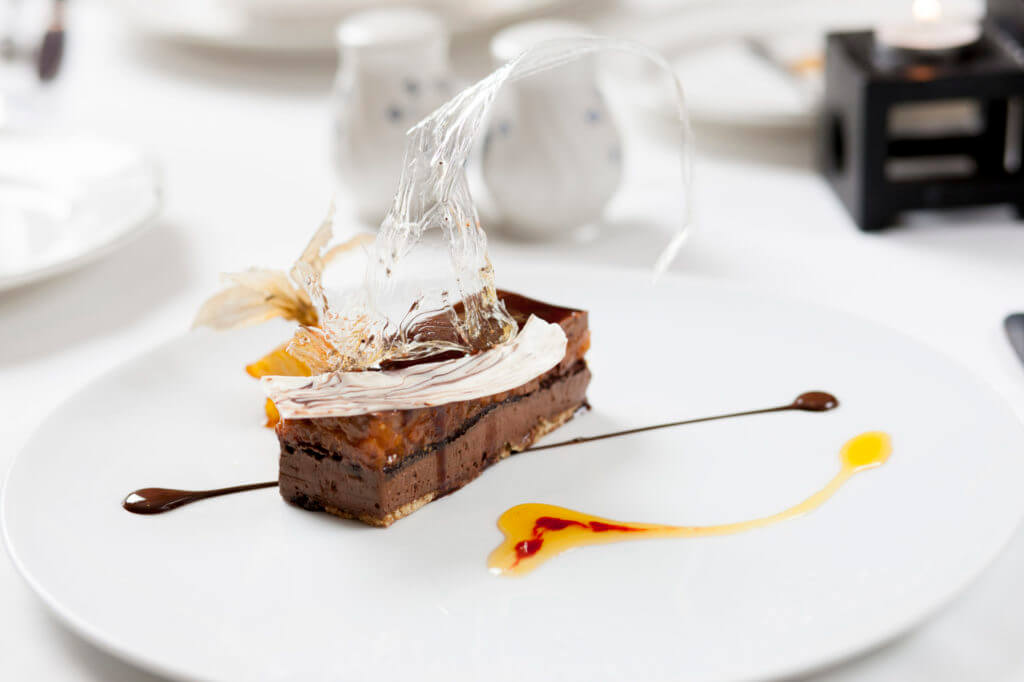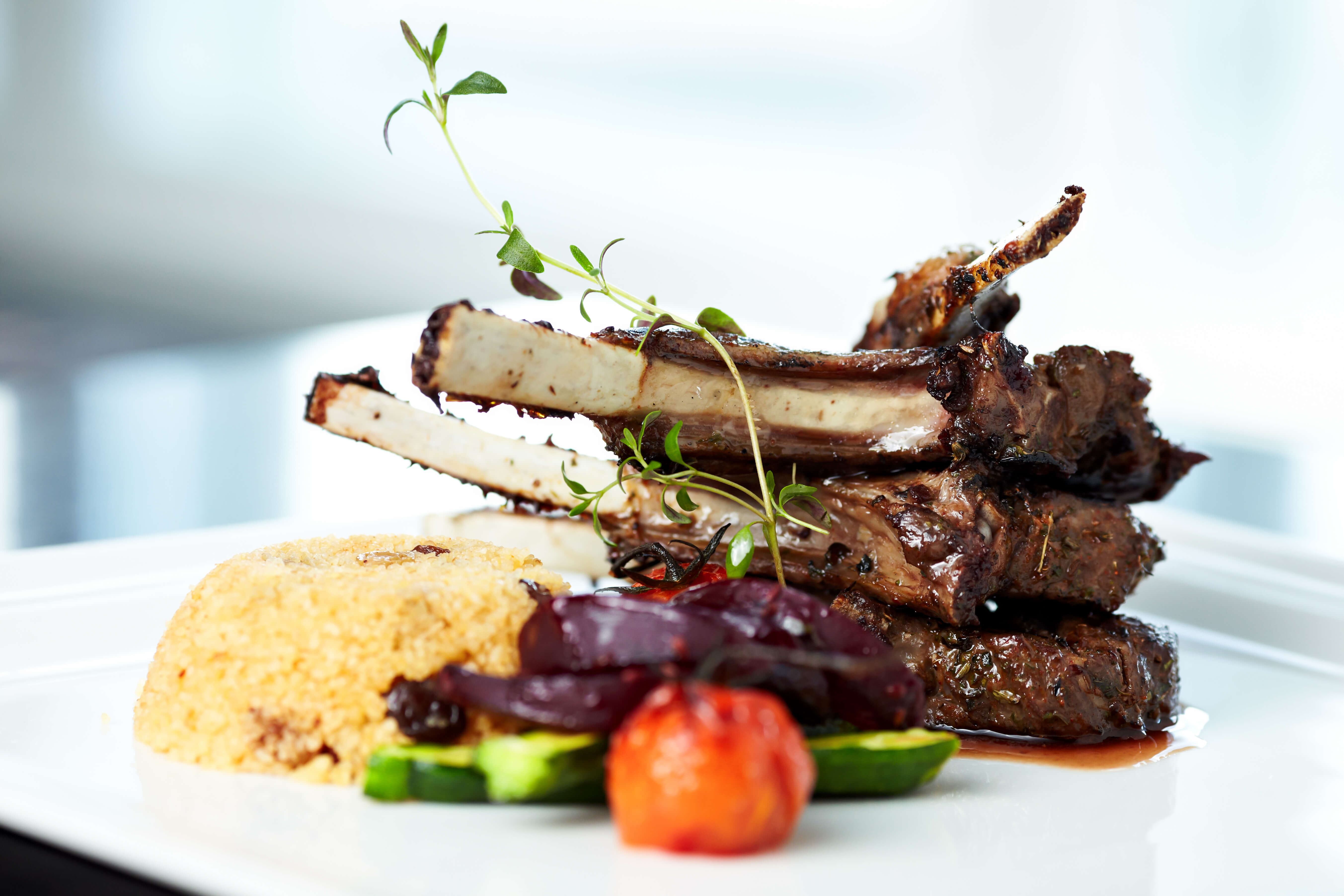The Perfect Plate: Principles of Food Presentation
A delicious meal appeals to more of your senses than just smell and taste. It must also appeal to the eye. Imagine sitting down at a restaurant, and in front of you is a beautifully plated dish, thoughtfully laid out and presented.
A perfectly plated dish can upgrade your meal immensely. Through the strategic placing of ingredients, you will automatically view the meal as a high-value. You’re also more likely to enjoy the taste and hold a higher opinion of the meal.
Plating the perfect dish is both an art and a science. Chefs and cooking enthusiasts must explore their creativity and play with color and texture while placing foods to create a visual appeal.
How do you create the perfect plate to present your food? We’re covering the basic principles to get you started.

Start with a Canvas
To begin plating the perfect dish, you must start with a canvas, or in this case, a dish. While you may be tempted to pull any old plate from your cabinet, there is more to it than that.
You’ll want to consider the size, shape, and color of the plate you’ll use. Typically, chefs use white dishes because they contrast nicely with food. However, other colored plates can work very well, depending on the color of the food presented.
Your plate’s size should be large enough so your meal doesn’t crowd the plate, yet small enough to make the portion sizes look fairly filling but not too small. Pick a plate that’s too large, and your meal will seem insufficient. Pick a plate that’s too small, and your meal will seem like too much.
Lastly, the shape of your canvas can drastically affect the presentation of your meal. A good rule of thumb is to choose a figure that matches the food you’re serving. For example, a square plate for lasagna or a round plate for pancakes are great choices.
Culinary & Pastry Career Survey
Culinary & Pastry Career Survey
What's your ideal culinary career? Answer 20 simple questions and see if your dream career gets revealed to you.

We’ve compiled of all of the essential questions into one handy guide: Career options, description of skill requirements, and more!


The Perfect Placement
Now that you have your canvas, it’s time to make some art. The placement of your ingredients is crucial for a perfect plate. This is where scientific facts come in to create aesthetically pleasing dishes.
The Clock Guidelines
Pretend your plate is a clock. Imagine the numbers along the edges to help guide where you should place certain foods. By following these rules, your meal will be evenly plated.
- Between 12 and 3, you should plate your vegetables.
- Between 3 and 9 is where your meat will sit.
- Between 9 and 12, you’ll present any starches included in the meal.
Stay Symmetrical
According to science, people find things that are symmetrical more attractive than asymmetrical. Use this principle to your advantage and make sure that your plate boasts symmetry.
Utilize White Space
Don’t underestimate the power of using white space on your dish. To create the perfect plate, spread out your food and leave parts of the dish empty. This will make your meal look cleaner, more elegant, and overall more professional.
Moist Ingredients First
Creating the perfect plate means paying attention to every detail. This also applies to what foods to present first.
Place moist ingredients, such as mashed potatoes or purees, on the dish before other elements. You can then place the rest of your meal on top of or beside these moist ingredients to keep them from shifting and ruining your perfect plate.
Always Use Odd Numbers
When serving individual foods, always plate them in odd numbers. While we recommended staying symmetrical with the entire presentation, the human brain finds odd numbers more pleasing than even numbers.
For example, if you’re serving ravioli, plate five instead of four or six to achieve the perfect plate.

The Details
To achieve a well-plated dish, you must pay attention to the details. Your guests may not notice these intricate details, but these little considerations make a world of difference if ignored.
Color
It’s time to bring back those memories of elementary school art class and the color wheel. When creating the perfect plate, use complementary colors. A colorful, bright meal will look more attractive and taste better than a dull, colorless dish.
Create a focal point and add a burst of color. You can use herbs, vegetables, or fruit as accent colors if the main dish seems a little bland. Lastly, utilize your white space by adding some color to pull the entire meal together.
Texture
A variety of textures on your plate will help present your meal attractively. Accentuate the different textures used through strategic placement.
For example, if serving creamy mashed potatoes, add sprinkled chives to create more depth and add another texture. You can do the same with meat by adding crushed nuts on top.

Create Tasteful Bites
While getting caught up in the perfect plate principles of food presentation, you can’t forget that your meal still has to taste good. Amplify the flavors in your meal with careful arrangements on the plate. You want the ingredients to go well together when someone takes a bite.
This thoughtful placement will give your guests a delightful flavor experience while adding another sense of beauty to your plate.
The Final Touches
You have your ingredients flawlessly placed on your dish to accentuate colors and texture and to amplify the flavors, but you aren’t done just yet! To achieve the perfect plate, you must consider some final touches.
Drizzle Your Sauces
Remember how we mentioned the importance of little details? Now it really shows when you simply drizzle sauce over your plate and pull it all together.
Think of your squeeze bottle as your paintbrush, adding the final touches to your canvas. Add accent dots to the white space, drizzle your sauce across the food, outline a ring on the plate’s outer edges, or create a unique design.
Let your inner artist shine through!

Thoughtful Garnishes
Adding a garnish to your plate can be a complete game-changer. However, you must be careful and strategic when using them. Some cooks tend to overdo it with garnishes.
While it’s a great way to add some more color and texture to the plate, they should be ingredients that will go well with your meal. You’ll want to avoid garnishes with a strong, overpowering smell, so as not to ruin the main dish.
A Quick Touch Up
They say a messy cook is a great cook. Unfortunately, that does not apply to perfect plating.
Before serving your dish, take a napkin to clean up any splotches or smears that may have accidentally shown up. Once you have cleaned up with crisp edges, you will have created the perfect plate using food presentation principles.
More Than Just a Pretty Plate
Cooking a great meal is more than just presenting an entree on a pretty plate. Embrace your enthusiasm for cooking and learn to make home-cooked gourmet meals in our online classes. With 320+ courses, you can learn the trade secrets and get one-on-one help from a professional Escoffier culinary school Chef Instructor.
Or take your passion further and earn an online culinary or pastry arts degree or diploma from Auguste Escoffier School of Culinary Arts.
If you enjoyed this article, read these next:
- Top Apps for Finding Recipes for Ingredients You Already Have
- How to Tournée Cut
- 4 Tips to Become an Artist in Plating
This article was originally published on March 06, 2019, and has since been updated.


